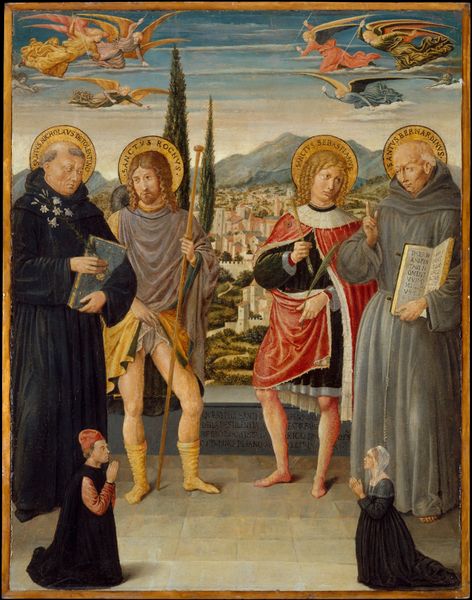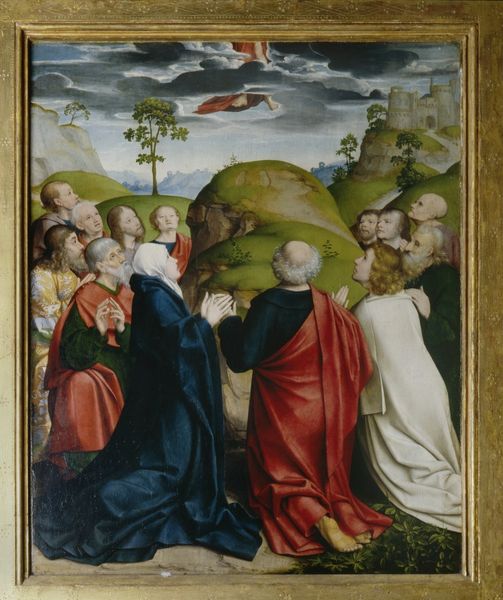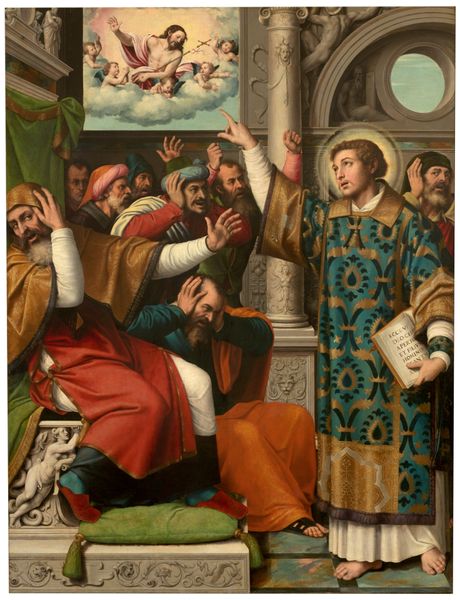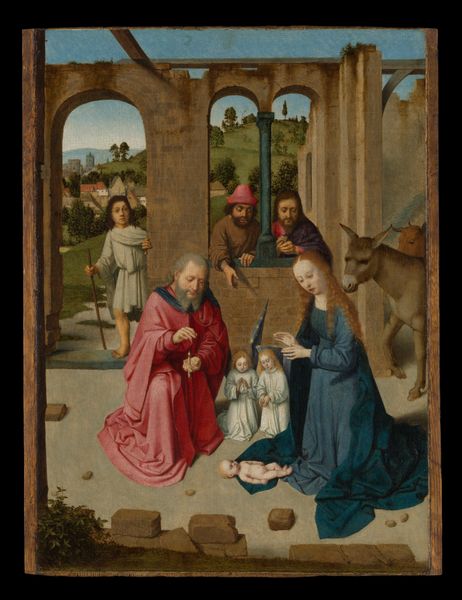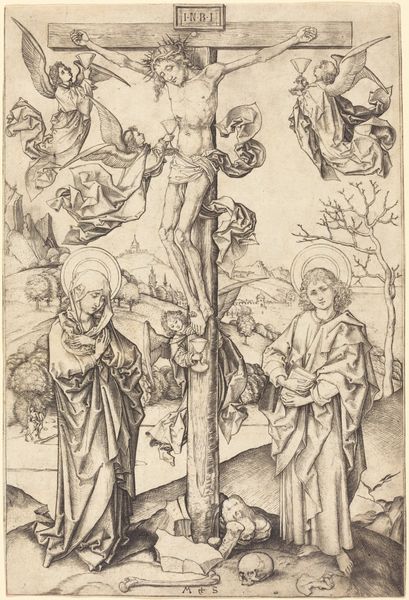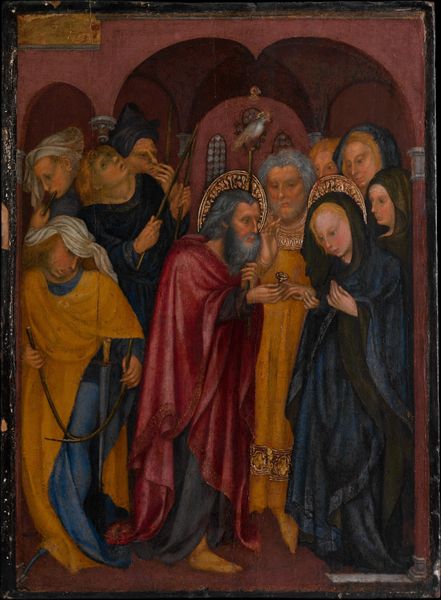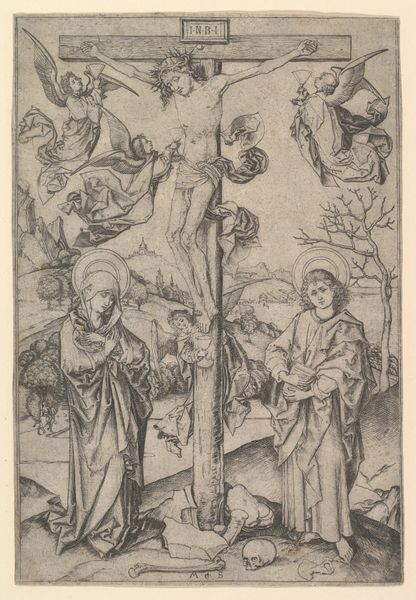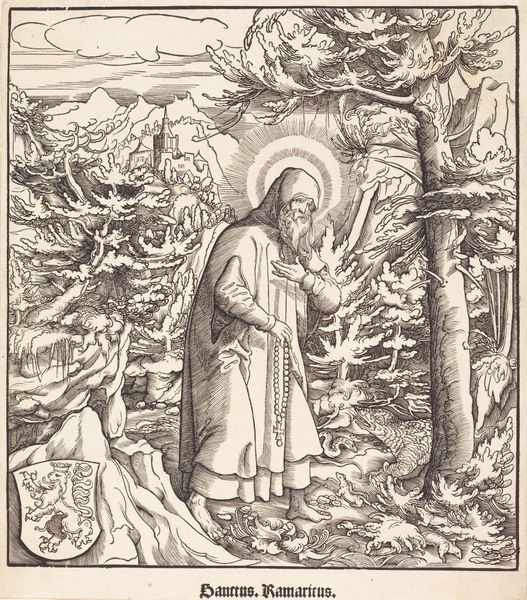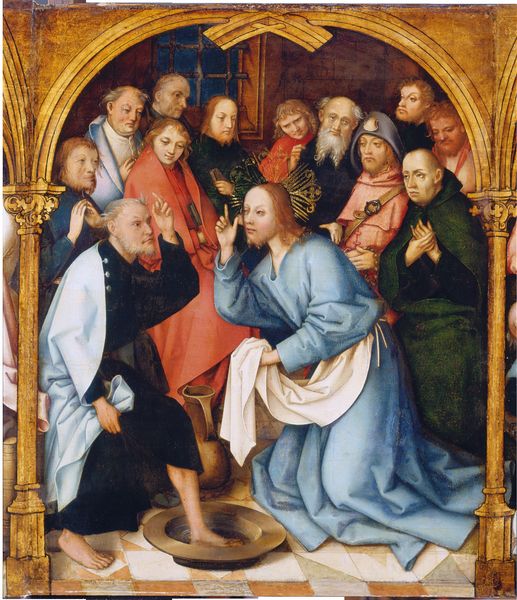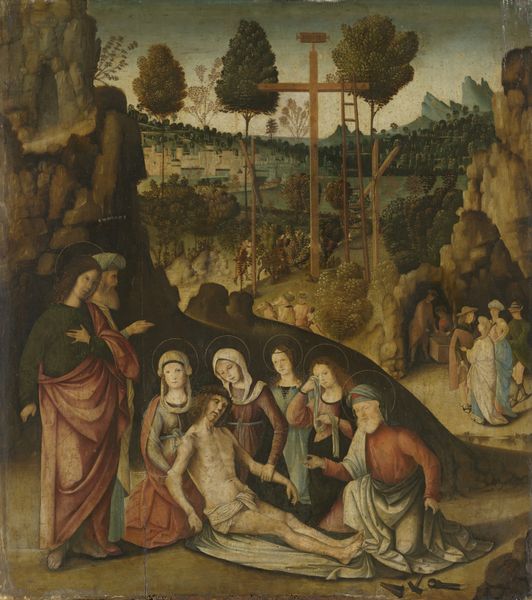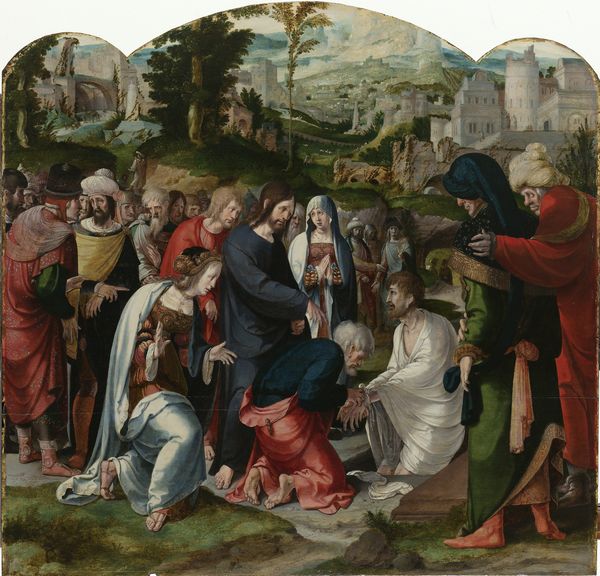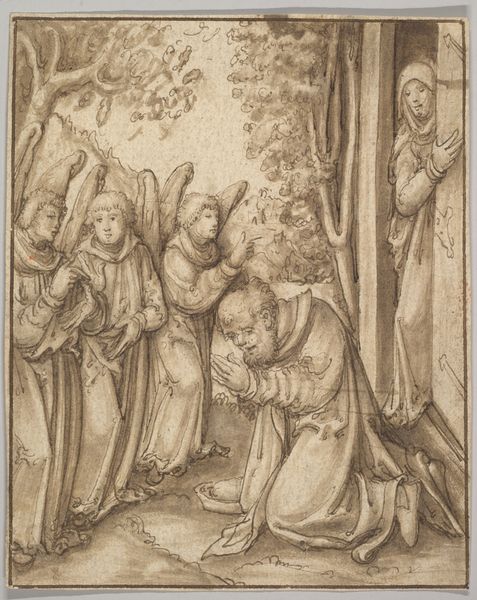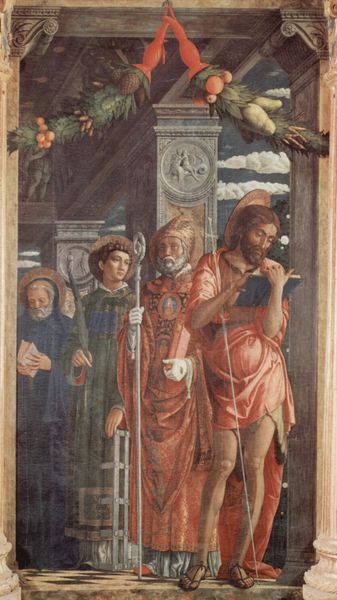
painting, oil-paint
#
medieval
#
narrative-art
#
painting
#
oil-paint
#
figuration
#
oil painting
#
jesus-christ
#
history-painting
#
international-gothic
#
angel
Dimensions: 35.7 x 26.9 x 0.7 cm
Copyright: Public Domain
Curator: Standing before us is "The Agony in the Garden," an oil painting from approximately 1440, housed in the Städel Museum. The authorship of this piece is attributed to an anonymous artist working in the International Gothic style. Editor: What immediately strikes me is its subdued palette and the compact composition, lending it a rather introspective, even melancholic, aura. The contrast between the figures feels deliberately pronounced. Curator: Absolutely. This moment depicted is pivotal in Christian iconography; Jesus, kneeling in Gethsemane, confronts his impending fate. The angel, bearing the cross and chalice, represents divine solace and the cup of suffering he must drink. Editor: The angel seems to intrude upon Christ's isolation though, positioned almost awkwardly, dominating the composition with the rigid geometry of the cross. It feels less like solace and more like a symbolic mandate. Curator: I see your point, but the angel is also a figure deeply rooted in theological concepts. As a symbol, the angel reassures of God's unwavering promise and a physical reminder of celestial grace. Consider the halo as well – an iconographic standard that defines divine status. Editor: Indeed, and notice the halo's unusual opacity against the subtle gradations of light across Christ’s robes. This treatment elevates the figures but flattens the depth of the space, enhancing the almost theatrical quality of the scene. It calls attention to the artwork as an artwork and symbolic form rather than illusionistic scene. Curator: Precisely. Also, the sleeping apostles clustered together. Their slumber not only represents humanity's failure to understand the magnitude of the moment but a sense of community bound by the shared ignorance of Christ’s fate. They do not and cannot see. Editor: Agreed. There’s a captivating dissonance between the immediate emotional reading—Christ’s sorrow, the angel’s burden—and the highly stylized formal choices that ultimately shape our viewing experience. The painting compels through visual economy. Curator: Reflecting on this artwork, I am struck by the enduring power of symbols to articulate spiritual complexity and a divine plan set in motion centuries before. Editor: And for me, it underscores how formal structure significantly manipulates meaning. Even while portraying the eternal drama, the visual devices call out that we are indeed dealing with a material object depicting an ethereal story.
Comments
No comments
Be the first to comment and join the conversation on the ultimate creative platform.
